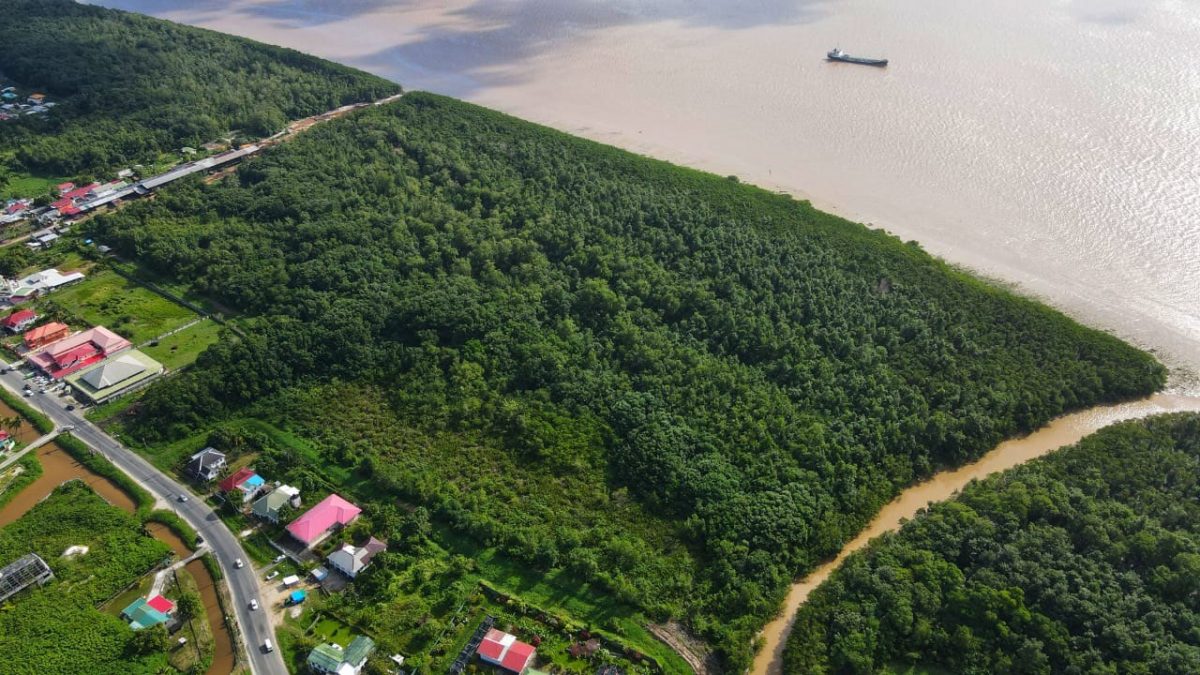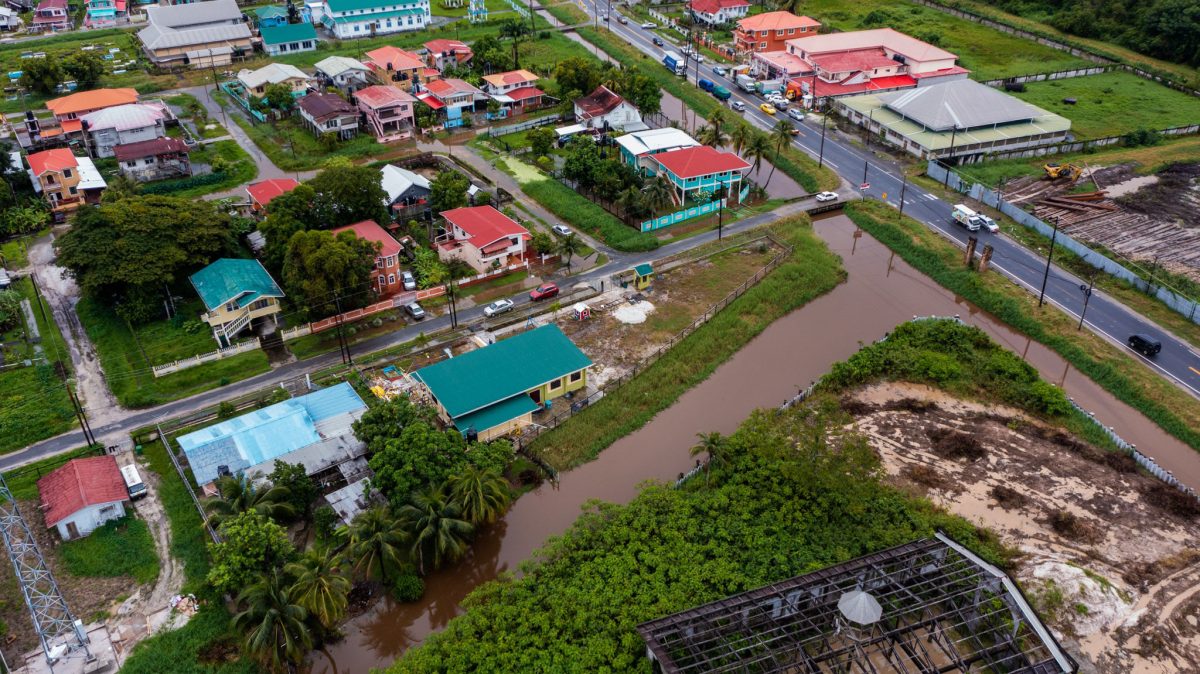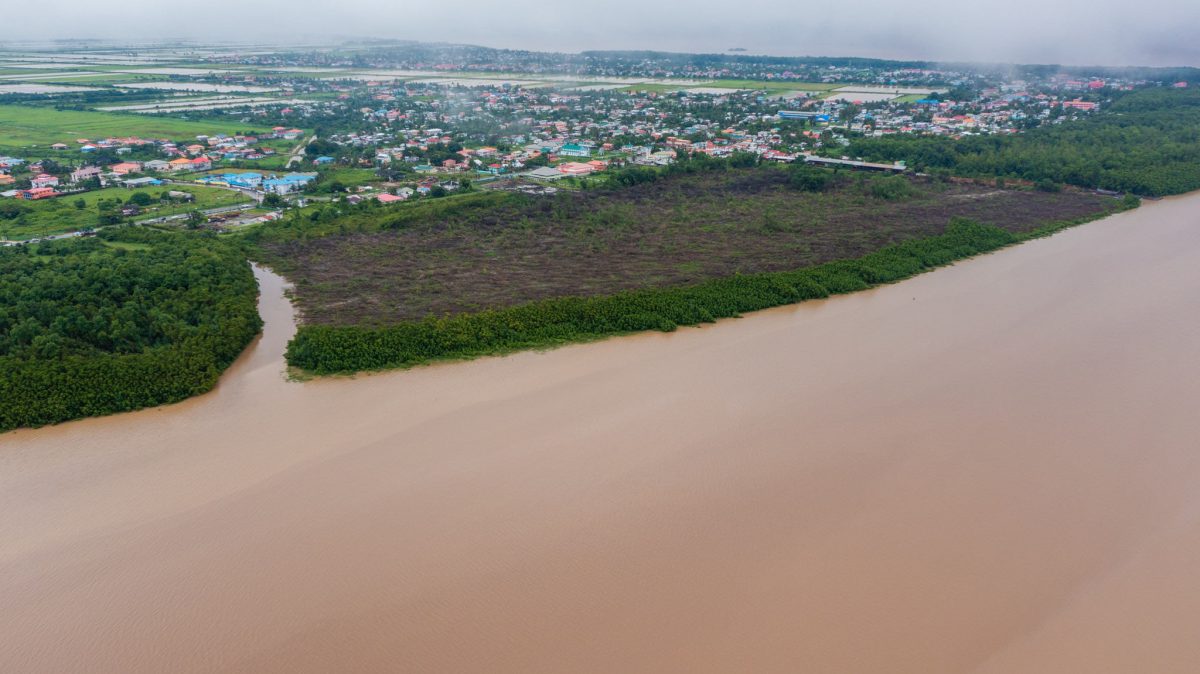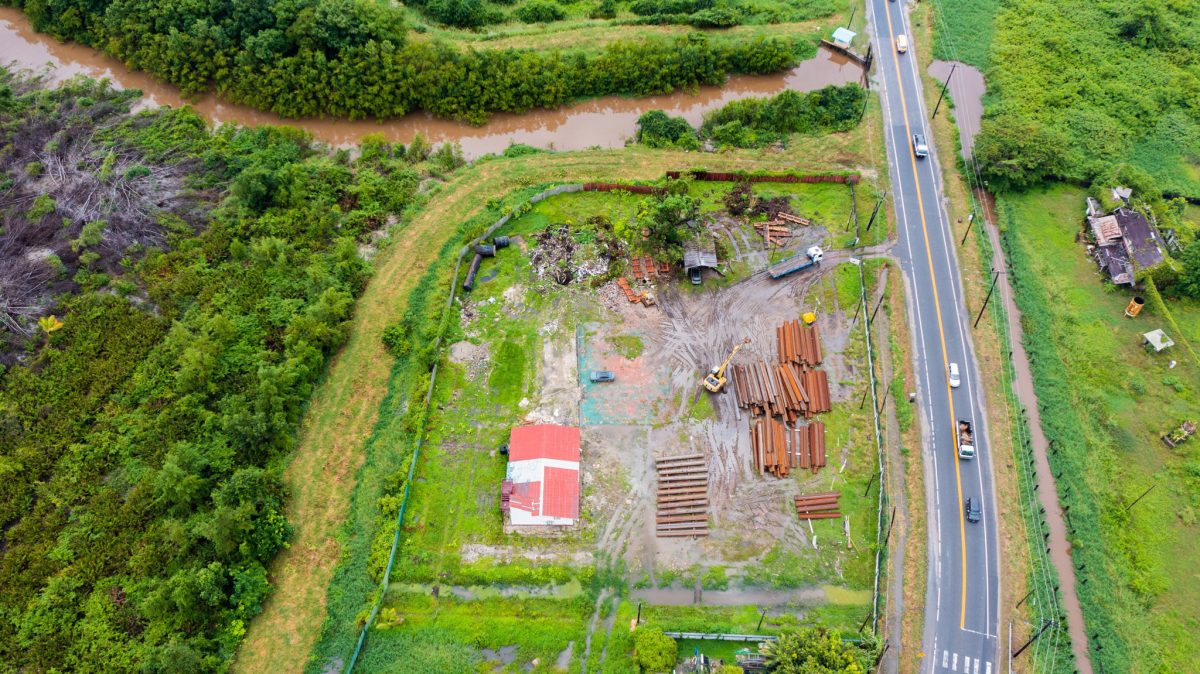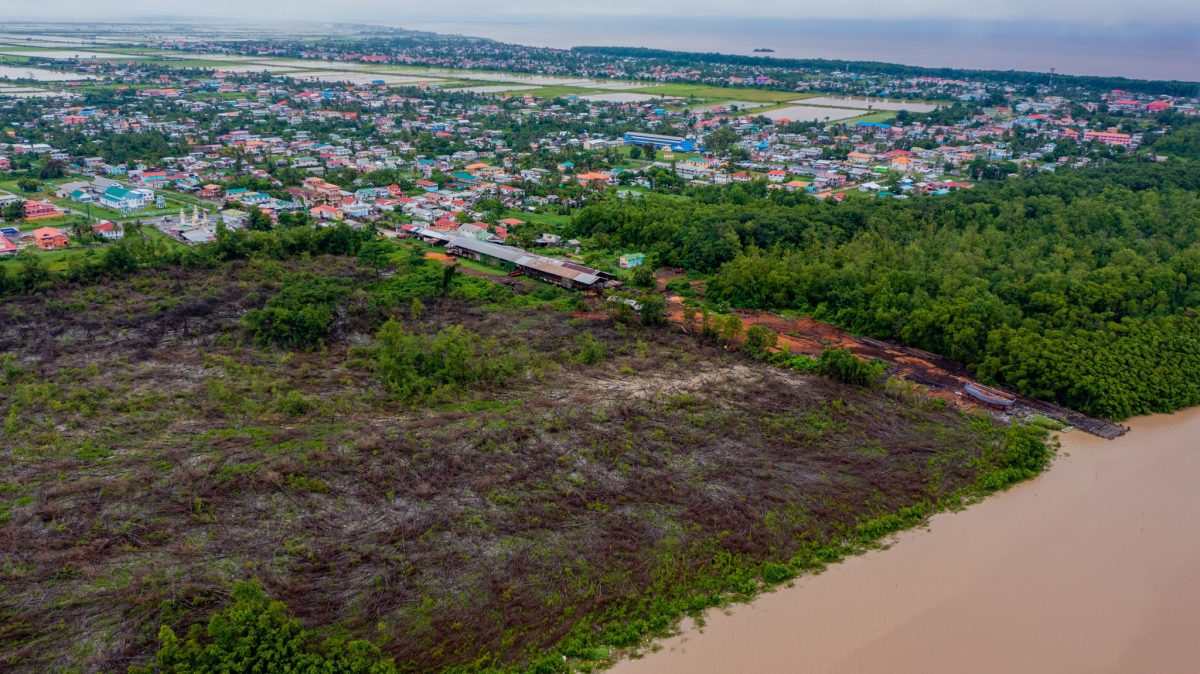Nearly 20,000 tonnes of steel sheet piles are being stockpiled by Tristar at its planned Malgre Tout offshore base as the company prepares to begin revetment works at the facility.
The company’s mobilization of sheet piles comes following its destruction of a large swathe of mangroves from its 66-acre property at Versailles/ Malgre Tout, West Bank Demerara.
“Almost 20,000 tons of sheet pile are … in country; some already at site. The contractor is ready to work and the installation team is waiting on the final updates of all permits,” Tristar Project Manager Narendra Sukhdeo told Stabroek News.
He explained that the project capitalization is pegged at between US$100- 150 million and when completed would see the employment of about 250 to 300 persons in the first phase. The project is being spearheaded by Florida-based Guyanese, Krish Persaud.
“The Versailles shore base will stimulate the overall economic development of West Bank, Demerara. Tristar’s vision is to develop a ‘win-win’ shore base project that aligns with the goals of the Government of Guyana and to also produce substantial socioeconomic benefits to the West Bank Demerara region,” Sukhdeo said, explaining the project’s intent.
With many of the 1,700 employees of the shuttered Wales Sugar Estate still unemployed, it is Tristar’s hope, according to Sukhdeo, that the entity can help cushion that impact from not only the provision of jobs but helping to stimulate growth.
Local suppliers and supplies will be first drawn from the “fenceline” communities in that process.
“The closure of the Wales Sugar Estate has caused significant job loss and economic dislocation for communities on the West Bank of the Demerara River. This project will resuscitate economic activity and commerce in these impacted communities,” he explained.
He added, “Integration of the shore base’s supply chain with local suppliers and local contractors drawn from fenceline communities will be a supply chain strategy of Tristar.”
The 66-acre property is bounded on the east by the Demerara River, on the south by an outfall channel, on the west by residential and commercial properties as well as the West Demerara Public Road and on the north by the Cheddi Sawmill.
Following the heavy rain last week, this newspaper last Thursday morning visited the site when the tide was high to assess the impact of flooding in the area. While there was flooding in areas on the eastern side of the West Demerara Public Road at Malgre Tout, drone photos showed a rise in the Demerara River but not on the property or its immediate neighbours. It is unclear if there is overtopping when the Spring Tide occurs.
The issue of the mangrove removal was brought to light early last month then this newspaper reported that during preparation phases for the proposed Demerara River establishment, a large swathe of the protected species was removed and it was unclear what mitigation measures would be put in place.
The company has been heavily criticised for the destruction of the mangroves in the area. The Sea Defence Board had said it had cleared more than it was permitted to.
The Environmental Protection Agency (EPA) is yet to say anything on the project and while Stabroek News posed questions to the agency nearly a month ago, there has been no response to its emails on a project whose profile should have been made public by the agency. This silence by the EPA is a clear violation of the Escazu Agreement which Guyana signed and which requires the release of full information to the public on projects such as the one at Malgre Tout.
Government had defended the project, underscoring that the mangrove removal on the western side of the Demerara was necessary in the scheme of plans for developing that area like the eastern side, so as to cater not only for the oil and gas sector but its holistic development agenda.
Minister of Public Works Juan Edghill has said that measures were being put in place to protect residents against flooding and that “with development comes changes”.
“…The development that is taking place in Guyana is not willy-nilly. This is well-planned. Structured. Structured in a context to bring about real world-class development of Guyana…..And that is not something to be sabotaged. That is something to be encouraged,” he said.
With Guyana now an oil producing country, Edghill added that there are infrastructural developments that are required to facilitate and properly service what is taking place in the country’s Exclusive Economic Zone. In particular, he said that the development on the West Demerara to facilitate the “new wave of development coming to Guyana” would require the removal of mangroves. “At some stage, mangroves will be displaced,” he said, “mangroves will have to be removed.”
Vice President Bharrat Jagdeo had also underscored development needs and lauded the project but has emphasised that investors must respect laws and policies governing the environment and all other areas.
“People have to follow the rules all over. It is a rules-based country…they all have to follow the rules,” Jagdeo said.
According to Jagdeo, the EPA is currently ironing out the issues of the absence of an Environment Impact Assessment for the development.
The West Bank of Demerara is expected to see the development of wharves, construction of the government’s gas-to-shore project and new roadways with connections to the new Demerara Harbour Bridge, among other things.
Jagdeo pointed out that every developer accessing riverfront lands will be required to invest and install mechanisms against flooding.
“We are still a carbon sink because of our forest but you have to put in the development for the people and it is crucial for Region Three,” he said.
However, with the West Bank of the Demerara River expected to see significant development within the next five to ten years, government is required to implement mitigating measures for carbon sequestration.
On that note, Jagdeo announced that the government is currently working with a European company to replant trees in mined-out areas in the hinterland to boost Guyana’s carbon credits.
The reforestation drive is being funded under the Guyana Forestry Commission to offset the impact of development, he stated.
